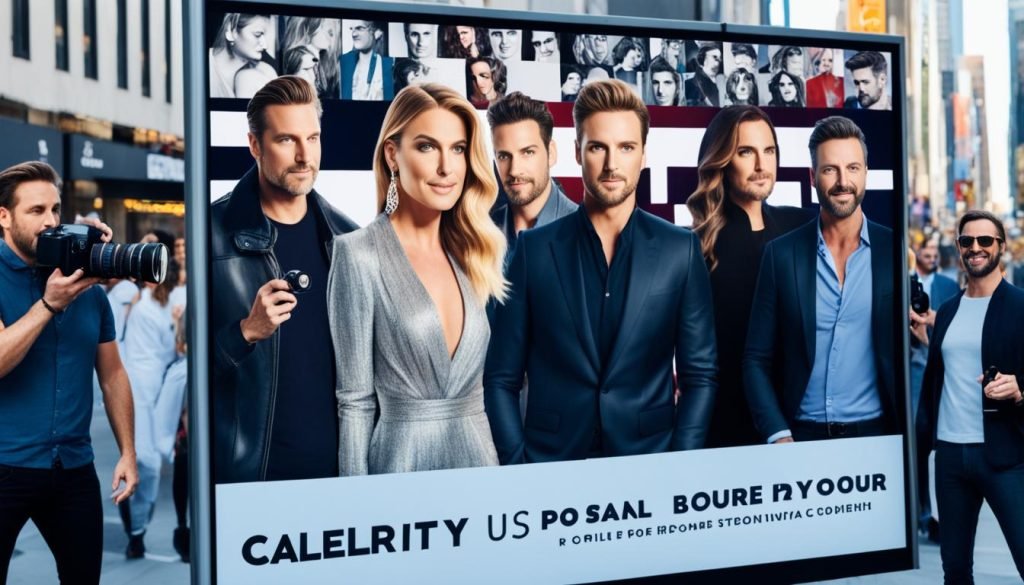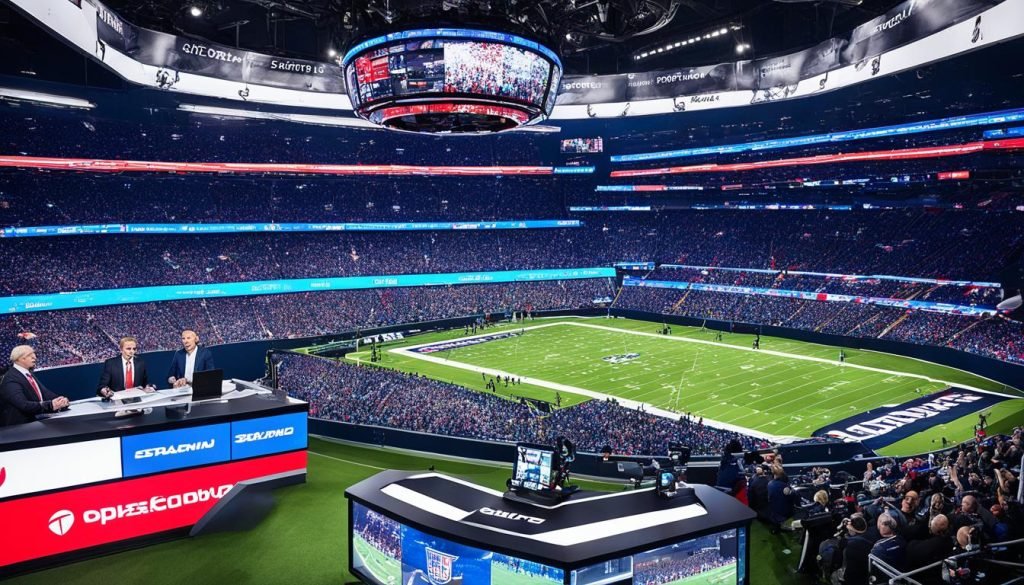The entertainment industry is constantly evolving, with new technologies and business models emerging that present both opportunities and legal challenges. This article will explore the key legal support for the entertainment industry, including issues related to intellectual property rights, contract negotiations, talent representation, licensing agreements, royalty management, dispute resolution, media regulations, production legalities, copyright protection, and regulatory compliance. By understanding these critical entertainment law considerations, entertainment professionals can better protect their interests and position their businesses for success in the dynamic and fast-paced world of new media and entertainment.
Key Takeaways
- The entertainment industry is constantly evolving, presenting both opportunities and legal challenges.
- Understanding key legal considerations, such as intellectual property rights and contract negotiations, is crucial for entertainment professionals.
- Navigating legal issues related to talent representation, licensing agreements, and royalty management is essential for business success.
- Staying compliant with media regulations and production legalities is vital for entertainment companies.
- Protecting intellectual property rights and ensuring regulatory compliance are critical in the dynamic entertainment industry.
AI and Generative Content: Navigating Copyright Challenges
The entertainment industry is facing a gale wind in 2023 – the rise of generative artificial intelligence (AI). This innovative technology presents both opportunities and legal challenges. As a tool, AI offers artists a new means to develop and express their creative freedoms. However, the impact of using this tool on the ownership and control of the resulting work remains unknown.
Sweeping Impact of Generative AI
The use of generative AI has permeated all facets of entertainment, including film/TV, content, video/audio, music, art, and gaming. This technology has raised concerns around bias, privacy rights, homogenization of content, and the potential loss of human creativity. The entertainment industry is closely watching as the US Copyright Office re-evaluates its decision to grant copyright registration to a comic book with text-to-image AI-generated graphics.
Fair Use and the Creation of GenAI
In 2024, media and entertainment businesses will focus on whether the longstanding notion of “content is king” has been disrupted by the “fair use” affirmative defense being deployed in the courts by AI technology companies operating platforms that generate creative works based on a user’s prompts, known as generative AI (GenAI). These companies assert they do not need permission from media and entertainment companies to train their GenAI platforms on copyrighted content, arguing that the training constitutes fair use and the generated works are not derivative.
Human Authorship Requirement for Copyright Registration
A recent decision by the US Copyright Office Review Board could have far-reaching implications for works of art created in part by GenAI. The Review Board affirmed a refusal to register a work of art partially created by GenAI, concluding that the work lacked the necessary “human authorship” to claim copyright protection. This decision marks a trend of courts and the Copyright Office rejecting copyright protection for AI-generated works. If a work contains too much GenAI content, it could lead to a loss of copyright protection, either in whole or in part. Copyright applicants must disclose the inclusion of AI-generated content in their applications, or risk cancellation of the registration and the inability to seek statutory damages from infringers.
Defamation Risks: High Stakes, High Damages
The media and entertainment industry has witnessed a surge in high-profile, high-stakes defamation cases in recent years. These cases underscore critical principles that companies in this space must consider to mitigate their defamation liability risks.
Firstly, a parent company can be held responsible for the defamatory statements made by its subsidiaries. The recent case where author E. Jean Carroll was awarded substantial punitive damages in her defamation action against Donald Trump exemplifies this principle.
Secondly, courts appear to be more inclined to award increased punitive damages when a defendant persists in repeating their defamatory statements. This is demonstrated by the New York court’s denial of Fox Corporation’s motion to dismiss Smartmatic’s defamation lawsuit, allowing the case to proceed to discovery.
To protect against the risk of defamation liability, media and entertainment companies must carefully evaluate the statements they publish, or those made by their agents or subsidiaries, to ensure they do not create a risk of defamation. Vigilantly monitoring and preventing the repetition of potentially defamatory statements is also crucial.
Right of Publicity: Adapting to Technological Advancements
The right of publicity is a critical means by which individuals can control the use of their digital identities. The increasing prevalence of new technologies, like NFTs and the Metaverse, provides wrongdoers with new opportunities to exploit and misuse those identities. Entertainers, artists, content creators, celebrities, and athletes should take care to protect their rights of publicity. For example, implement strategies to monitor for unauthorized uses of name, image, or likeness and enforcement of rights.
Expanding Protection for the Right of Publicity
The rise of deepfakes and advances in GenAI have caused concerns regarding the easy ability to mimic likenesses and voices. US Congress has taken notice. A discussion draft circulated by US senators in October 2023, the NO FAKES Act of 2023, would create a civil action for producing, publishing, distributing, or transmitting a “digital replica” of a real person’s image, voice, or likeness without consent (with some exceptions). A bill introduced in the House of Representatives in January, the No AI FRAUD Act, would create a civil action for certain conduct involving “digital depictions” and “digital voice replicas” of real people without their consent. These proposed bills would not preempt existing state law rights of publicity but create an additional remedy for certain unauthorized uses of a person’s likeness.

Essential IP Audits: Aligning Rights with Technological Evolution
As AI, digital content, and the metaverse continually evolve how goods and services are provided to consumers, media and entertainment companies must adapt their intellectual property (IP) rights and legal options to face these new challenges and opportunities. One critical step is to review form agreements, such as contracts with production companies, talent, licensees, and affiliates, as well as online terms of service and privacy policies, to confirm that they have secured their current and future interests for real-world scenarios and digital, virtual, augmented, and electronic platforms.
Another essential step is to audit trademark portfolios for potential gaps in coverage for virtual goods and/or services, and strategically fill those gaps. As a reminder, the US Patent and Trademark Office (USPTO) requires an applicant to have a good faith intent to use the trademark in connection with all goods and services in an application at the time of filing. Failure to meet this requirement can render the application and any resulting registration void.
| Key Considerations for IP Audits | Strategies for Adapting to Technological Evolution |
|---|---|
|
|
By taking these proactive steps, media and entertainment companies can align their IP rights with the rapidly evolving technological landscape, ensuring they are well-positioned to protect their valuable assets and capitalize on new opportunities in the digital platforms of the future.
Sports Broadcasting: The Rise of Streaming Platforms
The sports media landscape is experiencing increasing fragmentation with the rise in streaming services and digital platforms. We have seen a decline in the traditional modes of sports broadcasting. Gone is the old model of having 82 games broadcast on a combination of over-the-air and cable broadcasters. In 2024 and beyond, the competition to broadcast professional league content will continue to increase, with streaming services and digital platforms willing to pay a premium for these media rights.
This trend has already led to further realignment of the sports media landscape, as evidenced by the 2023 bankruptcy petition filed by Diamond Sports Group, which provides regional television broadcasts for teams in the National Basketball Association (NBA), National Hockey League (NHL), and Major League Baseball (MLB). As leagues enter into partnerships, rights holders must carefully consider how to allocate their rights to maximize revenue.
| Platform | Key Sports Content | Viewership Trends |
|---|---|---|
| Netflix | Formula 1 racing, PGA Tour golf | Steady growth in sports-related content consumption |
| Amazon Prime Video | Thursday Night Football, ATP Tour tennis | Significant increase in live sports viewership |
| Disney+ | ESPN+ integration, select MLB and NHL games | Leveraging Disney’s extensive sports media portfolio |
| Peacock | Premier League soccer, select NFL games | Steady growth as a complement to linear sports channels |
The table above highlights the key sports broadcasting content and viewership trends across some of the leading streaming platforms. As this dynamic market continues to evolve, sports leagues and media companies must carefully navigate the shifting sports media landscape to maximize the value of their media rights.

Fair Use Post-Warhol: Implications for New Media and GenAI
The US Supreme Court’s ruling against artist Andy Warhol’s estate in the copyright dispute over the use of a photograph of Prince for a Vanity Fair cover continues to raise questions concerning the wide-reaching implications for new media and generative AI (GenAI) in 2024. In a 7-2 decision, the Court found the “purpose and character” factor of the copyright fair use analysis did not weigh in favor of a finding of fair use where the use of a new work encompassing an original work shares the same purpose as the use of the original work and is commercially licensed.
Although the addition of a new meaning or message is a relevant consideration in assessing the purpose and use of a work for purposes of determining fair use, it is not dispositive. As companies and executives continue to grapple with how to use new AI technologies, this Warhol decision is forcing leadership to more carefully consider whether the new works created could qualify as transformative, and whether they go beyond that required to qualify as a derivative work.
Book Bans: Legal Challenges in the Publishing Industry
The publishing industry has found itself at the center of a growing battle over book bans and censorship. Many states have enacted sweeping laws that broadly require the removal of books from public or school libraries, often with little basis in existing constitutional jurisprudence. These laws frequently lack clear guidance for educators on implementation and include provisions that penalize them for failure to comply.
In a significant victory for the publishing industry, an ArentFox Schiff legal team recently obtained a preliminary injunction preventing the enforcement of one such law. The law in question had mandated the removal of books from schools and classroom libraries. The plaintiffs in this case included the world’s largest trade publisher, Penguin Random House, four award-winning authors, the Iowa State Education Association, teachers, a librarian, and a high school student.
This legal battle underscores the publishing industry’s commitment to protecting the First Amendment rights of both authors and readers. Book bans and censorship pose a grave threat to the publishing industry and the fundamental freedoms it represents. As these legal challenges continue to unfold, the industry must remain vigilant in defending the right to free expression and access to information.

Data Privacy: Relevance in the Expanding Use of Technology
In recent years, data privacy has emerged as a pressing concern for media and entertainment companies. The introduction of the European Union’s (EU) General Data Protection Regulation (GDPR) in 2018, along with the California Consumer Privacy Act (CCPA) and its subsequent amendment, the California Privacy Rights Act of 2020 (CPRA), have significantly impacted the industry. These regulations, as well as 13 other new comprehensive privacy laws across the United States, have imposed a range of new requirements on media and entertainment companies.
GDPR and State Privacy Laws
The GDPR and its counterpart in the United Kingdom (UK), as well as US state privacy laws, have introduced a host of new obligations for media and entertainment companies. From opt-outs for targeted advertising and profile creation to data use assessments and honoring individuals’ requests to access, correct, or even delete their personal information, these laws have dramatically altered the data privacy landscape. Additionally, detailed contract requirements for sharing personal information with vendors and other third parties have become essential.
Cross-Border Data Transfers
The GDPR and UK law also restrict the cross-border transfer of personal information, even among affiliates. This has led to a large and growing trend in the media and entertainment industry, as companies navigate the complexities of data privacy regulations across different jurisdictions. Navigating these cross-border data transfer requirements has become a crucial consideration for businesses operating in the global digital landscape.
Legal Support for the Entertainment Industry
The entertainment industry is a complex and ever-evolving landscape, requiring robust legal support to navigate the intricate web of copyright protection, contract negotiations, and regulatory compliance. As the industry continues to adapt to new technologies and business models, it is essential for entertainment professionals to stay ahead of the curve and ensure their interests are protected.
Copyright Protection
The world of entertainment is filled with iconic global brands and characters, and the challenges of brand protection in the Metaverse, blockchain, and augmented reality (AR)/virtual reality (VR) are of heightened importance. Brand owners are finding themselves exposed due to limitations of previous go-to online IP enforcement tools, such as the Digital Millennium Copyright Act (DMCA) and ICANN’s Uniform Domain Name Dispute Resolution Policy (UDRP). To ensure these technologies can thrive, clear standards and policies must be in place to protect intellectual property rights and reduce consumer fraud and deception.
In the gaming entertainment industry, video game developers own a broad set of copyright protection under U.S. federal law for the game content they create. Additionally, third-party created content embedded in games, such as music, has separate and additional copyright protections. As the streaming market continues to grow, with platforms like Twitch and YouTube hosting live gameplay, game developers should regularly review their copyright protection policies and procedures to stay ahead of new ways users may utilize their content on digital platforms.
Contract Negotiations
The entertainment industry is a highly competitive landscape, with branding agents and business managers presenting evolving (yet untested) strategies to secure long-term contracts and licensing for Metaverse and web3 services. Entertainment professionals must be diligent in their contract negotiations, ensuring their interests are protected and that they are positioned for success in the ever-changing digital landscape.
Regulatory Compliance
Navigating the complex web of media regulations and production legalities is a critical aspect of the entertainment industry. Entertainment companies must ensure they are in compliance with regulatory requirements, from data privacy laws to content restrictions, to avoid costly legal disputes and protect their brand’s reputation.
By understanding and addressing these key legal considerations, entertainment professionals can better protect their interests, position their businesses for success, and continue to captivate audiences with their iconic creations.
Conclusion
As the entertainment industry continues to evolve, navigating the legal considerations becomes paramount for the success and protection of your business. From the implications of generative AI and the right of publicity to the impact of streaming platforms and data privacy regulations, the legal landscape is constantly shifting. By staying informed and proactive, you can position your entertainment enterprise for long-term growth while safeguarding your intellectual property, negotiating effective contracts, and ensuring regulatory compliance.
Whether you’re a content creator, media company, or sports broadcasting entity, understanding the nuances of entertainment law is crucial. By conducting comprehensive IP audits, monitoring emerging technologies, and vigilantly protecting against defamation risks, you can navigate the dynamic entertainment industry with confidence. As the legal terrain evolves, your ability to adapt and leverage the latest developments will be the key to your continued success.
As the entertainment industry navigates these legal challenges, it’s essential to maintain a clear focus on protecting your interests, fostering innovation, and delivering exceptional experiences to your audience. By staying at the forefront of the legal landscape, you can unlock new opportunities, mitigate risks, and solidify your position as a leader in the ever-evolving world of entertainment.

